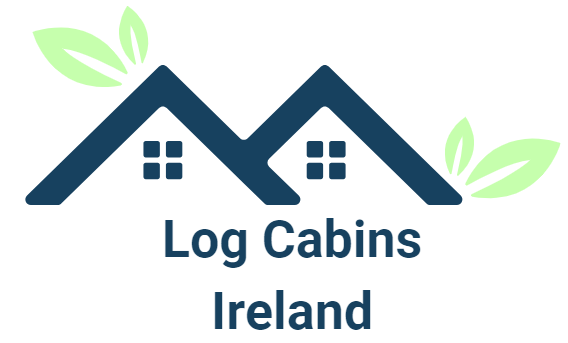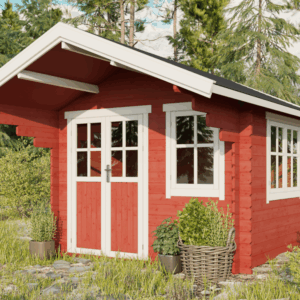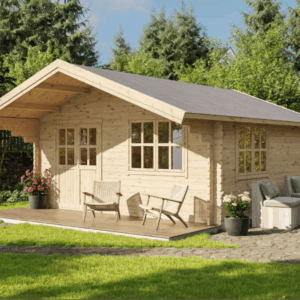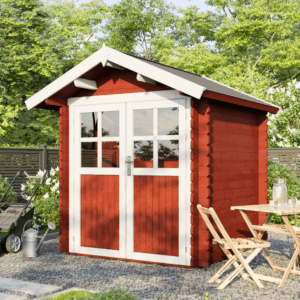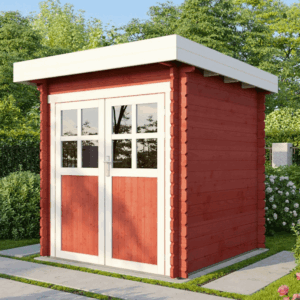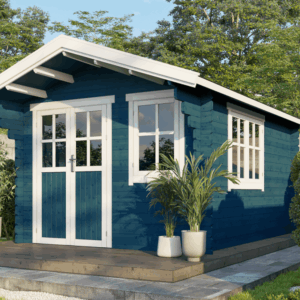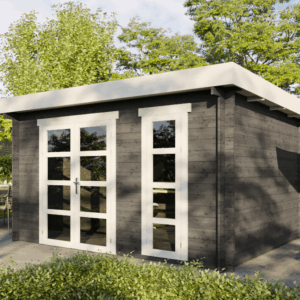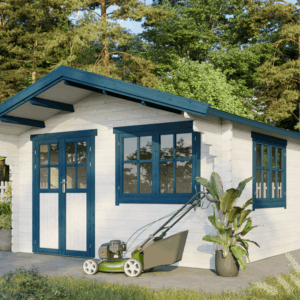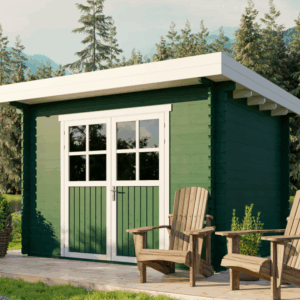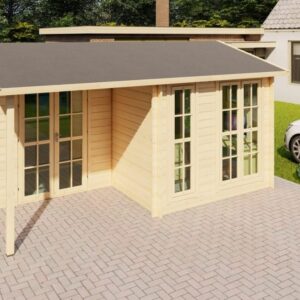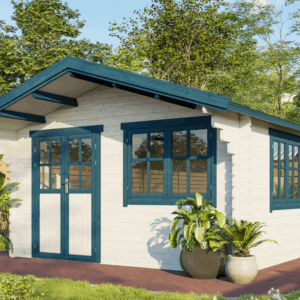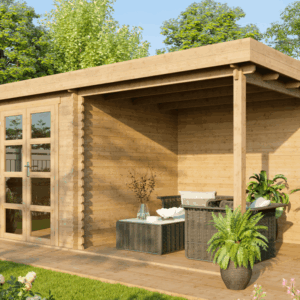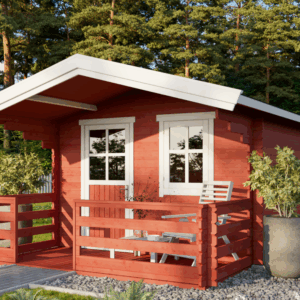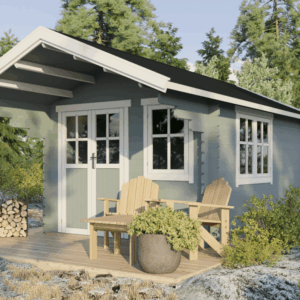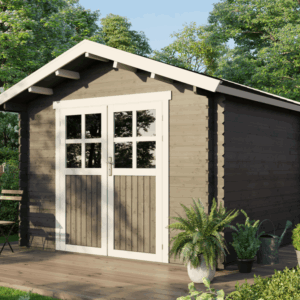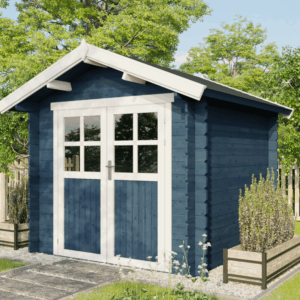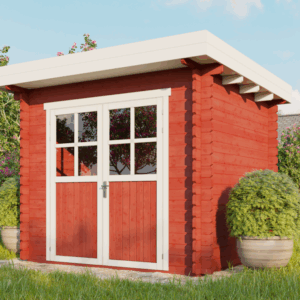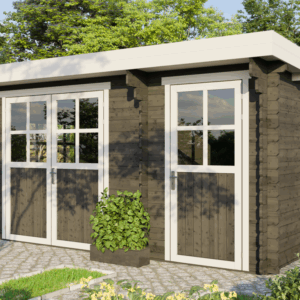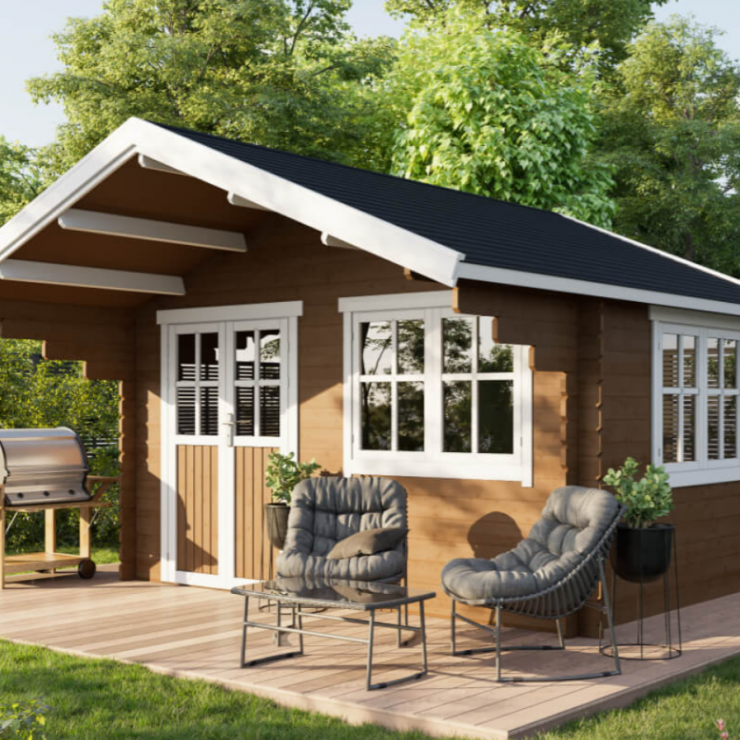Are you dreaming of escaping the hustle and bustle, finding solace in nature, or perhaps creating a unique space for a home office or guest accommodation? Look no further than the enchanting world of log cabins in Ireland, specifically within the vibrant heart of Athlone. This guide provides an in-depth exploration of everything you need to know about log cabins in this beautiful region, from sourcing the perfect cabin to navigating planning regulations and ultimately creating your dream retreat. Whether you are a seasoned builder or a first-time homeowner, this comprehensive resource will equip you with the knowledge to bring your log cabin aspirations to life in Athlone and beyond.
The Allure of Log Cabins: Why Choose Athlone, Ireland?
Log cabins, with their rustic charm and natural aesthetics, offer a compelling alternative to traditional brick-and-mortar structures. They seamlessly blend into the Irish landscape, providing a warm and inviting atmosphere that resonates with the country’s rich heritage and commitment to sustainability. Athlone, nestled at the heart of Ireland, offers a strategic location with stunning natural beauty, excellent connectivity, and a thriving community, making it an ideal location for your log cabin investment. The town’s proximity to Lough Ree, the Shannon River, and surrounding countryside offers endless opportunities for outdoor recreation and a tranquil lifestyle.
Choosing Athlone specifically adds another layer of appeal. The area boasts a rich history, vibrant culture, and a welcoming community, making it a desirable place to live or own a holiday home. Furthermore, the accessibility of Athlone, being centrally located, provides easy access to major cities like Dublin and Galway. The growing tourism sector in the area also makes log cabins attractive for rental opportunities, offering a potential revenue stream for property owners looking to capitalize on the region’s popularity.
Finding the Right Log Cabin: Types, Materials, and Considerations
The first step in your log cabin journey is understanding the various types and materials available. Log cabins are typically constructed using either interlocking logs or a post-and-beam method. Interlocking logs provide a simpler and more cost-effective build, while post-and-beam construction offers greater flexibility in design and the option for more complex architectural features. Consider factors like your budget, desired aesthetics, and structural requirements when making your selection. This initial decision shapes much of your project’s scope.
The type of wood used significantly impacts the cabin’s longevity, aesthetic appeal, and insulation properties. Popular choices include spruce, pine, and cedar. Spruce and pine are readily available and more affordable options, offering good structural integrity. Cedar, renowned for its natural resistance to decay and insects, often comes at a higher price point but provides superior durability and a beautiful, natural aroma. Research the pros and cons of each wood type before making your final decision to ensure your cabin stands the test of time.
Beyond the core structure, consider insulation, windows, and doors. Proper insulation is crucial for energy efficiency and year-round comfort, especially in the Irish climate. High-quality windows and doors not only enhance the cabin’s aesthetic appeal but also contribute to its thermal performance. Think about double or triple-glazed windows and insulated doors to minimize heat loss during the colder months. These factors are crucial for creating a comfortable and sustainable living space.
Prefabricated vs. Custom-Built Log Cabins
A crucial decision involves choosing between a prefabricated or a custom-built log cabin. Prefabricated cabins offer a streamlined and often more affordable option. They come as pre-designed kits with standardized components, making the construction process relatively straightforward. However, this limits customization options, potentially restricting your ability to tailor the cabin to your specific needs and preferences. This approach can also reduce the overall build time significantly.
Custom-built log cabins provide unparalleled flexibility in design, allowing you to create a truly unique and personalized space. You can work with an architect and builder to incorporate specific features, layouts, and finishes that perfectly match your vision. While this approach typically involves a higher upfront cost and a longer construction timeline, it offers the advantage of creating a bespoke cabin that perfectly fits your lifestyle and the constraints of your specific site in Athlone. Think about your desired level of personalization when evaluating each option.
Navigating Planning Permission and Building Regulations in Athlone
Before you even lay the first log, understanding planning permission and building regulations is essential. In Ireland, all construction projects require planning permission unless they fall under specific exemptions. Log cabins, due to their permanent nature, typically require planning approval. Familiarize yourself with the local planning policies of Westmeath County Council, which governs the Athlone area, to understand the specific requirements and regulations. Thorough planning will prevent costly delays down the line.
Building regulations cover various aspects, including structural integrity, fire safety, and energy efficiency. You must ensure your log cabin meets these standards to ensure the safety and longevity of the structure. Consulting with a qualified architect or building surveyor familiar with Irish regulations is highly recommended. They can guide you through the planning process, ensuring compliance and helping you navigate any potential challenges. Understanding the regulations at the outset streamlines the building process.
Be prepared to provide detailed plans, drawings, and supporting documentation as part of your planning application. This may include site plans, elevation drawings, and specifications outlining the materials and construction methods. The application process can take several weeks or even months, so factor this timeline into your overall project schedule. Patience and careful attention to detail are key to successfully obtaining planning permission for your log cabin in Athlone.
Building Your Log Cabin: Step-by-Step Guide and Tips
Once you’ve secured planning permission, the exciting task of building your log cabin begins. If you are constructing the cabin yourself, thorough preparation is key. This begins with preparing the site, leveling the ground, and establishing a solid foundation. The foundation will depend on your local conditions and the design of the cabin, but commonly includes a concrete slab or a pier and beam system.
For prefabricated cabins, the assembly process typically involves following the manufacturer’s instructions. This may include stacking the logs, securing them with fasteners, and installing windows, doors, and roofing. Custom-built cabins require a more complex construction process. You’ll need to work closely with your builder or contractor to ensure the cabin is constructed according to the approved plans and meets all relevant building regulations. Ensure you have the necessary tools, equipment, and a skilled team for the construction.
Essential to your success is selecting skilled contractors or adopting a comprehensive “hands-on” learning approach. Consider hiring qualified professionals for specialized tasks like electrical wiring, plumbing, and roofing. Regular inspections throughout the construction process are crucial to ensure quality and compliance with building standards. Documenting each stage with photographs and notes creates a detailed record of the project. This record is invaluable for resolving any future problems or for insurance purposes.
Finishing Touches and Interior Design for Your Athlone Log Cabin
With the structure in place, it’s time to focus on the finishing touches and interior design. This is where you can truly personalize your log cabin and create a warm and inviting atmosphere. Consider the style and function of each space and choose materials and furnishings that complement the natural aesthetic of the log cabin. The finishing touches provide the character of the space.
Think about incorporating natural materials like wood, stone, and textiles to enhance the cabin’s rustic charm. Choose a color palette that reflects the surrounding landscape, using earthy tones and natural hues to create a sense of harmony. Embrace cozy elements such as a fireplace, comfortable seating, and soft lighting to create a welcoming and relaxing ambiance. The aim is to create a sense of relaxation and respite.
The interior design should reflect your lifestyle and preferences. Whether you are creating a holiday home, a permanent residence, or a home office, carefully consider the functionality of each space. Optimize the layout to maximize space and natural light. Think about storage solutions, such as built-in shelving and cabinets, to keep the cabin organized and clutter-free. The goal is to blend functionality with aesthetics to bring your vision to life.
Maintenance and Care: Ensuring the Longevity of Your Log Cabin
To ensure your log cabin remains in excellent condition for years to come, regular maintenance and care are essential. Log cabins are subject to the elements, and require preventative care to avoid problems. This includes regular inspections, cleaning, and periodic treatments. Consider this an ongoing process of preserving the cabin’s integrity.
Protecting the exterior logs is crucial. This involves applying a high-quality wood preservative to protect against moisture, insects, and UV damage. Reapply the treatment as recommended by the manufacturer, typically every few years. Periodically inspect the logs for any signs of cracking, splitting, or rot, and address any issues promptly. This proactive approach will prevent expensive repairs down the line.
In addition to exterior maintenance, regularly clean the interior of your log cabin. Dust and dirt can accumulate, causing damage over time. Ventilation is also important to prevent moisture buildup and mold growth. Proper ventilation and regular cleaning will maintain the fresh, clean atmosphere that log cabins are loved for. Implementing these simple maintenance practices will maximize the lifespan and enjoyment of your log cabin in Athlone.
Log Cabins Ireland Athlone: Conclusion – Your Dream Retreat Awaits
Building or buying a log cabin in Athlone, Ireland is an exciting and rewarding endeavor. By carefully considering the factors discussed in this comprehensive guide, you can navigate the process with confidence, from sourcing the right cabin to obtaining planning permission and creating a beautiful and functional living space. Embrace the charm of log cabins and the natural beauty of Athlone, and you will create a sanctuary where you can relax, reconnect with nature, and enjoy the Irish lifestyle. Your dream retreat is within reach; start planning your log cabin adventure in Athlone today!
“`
Looking for services in Athlone? You may also like: Flower Delivery 24.
